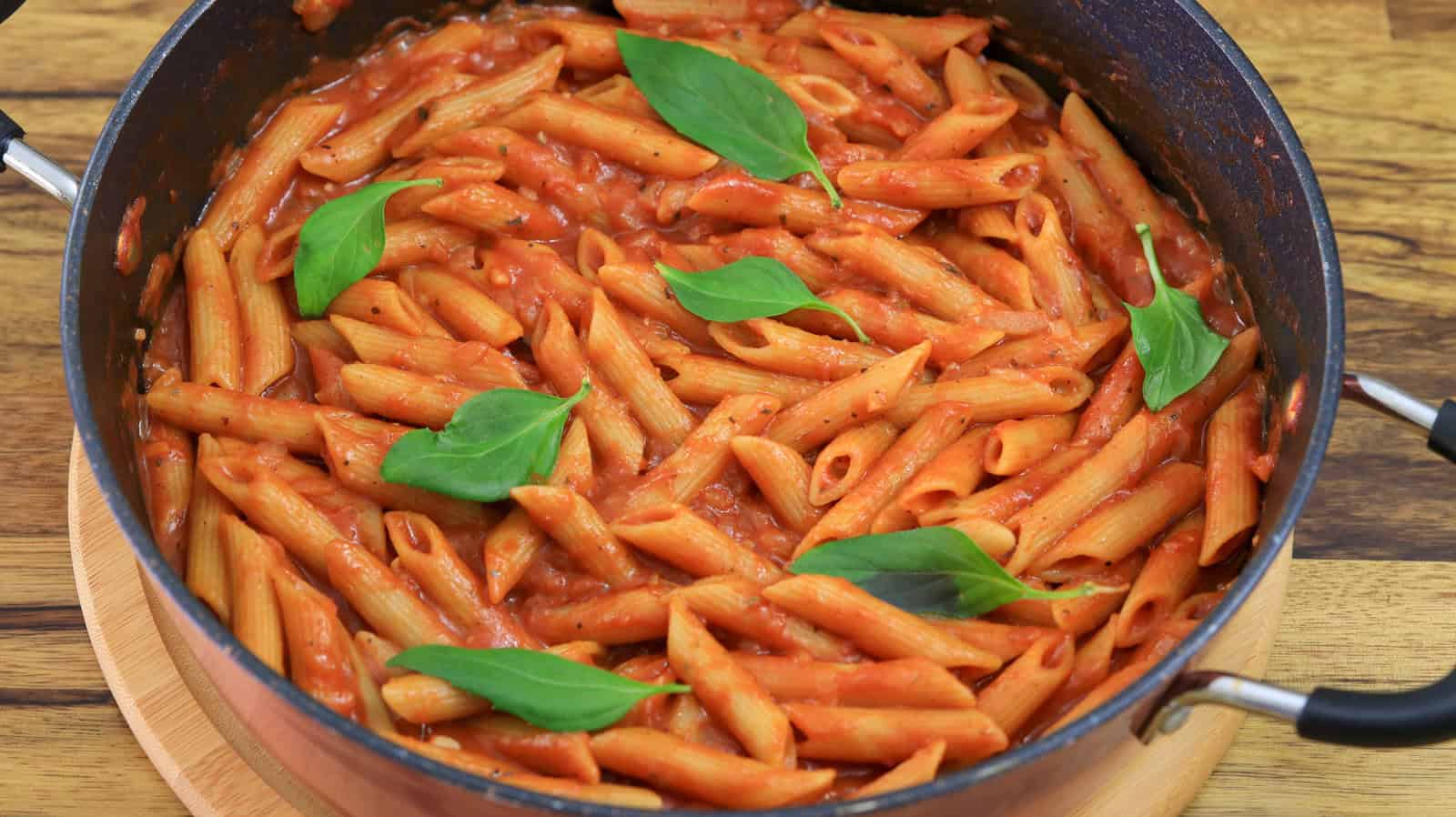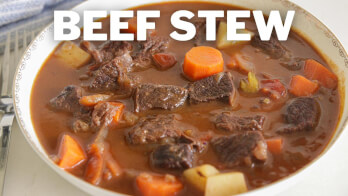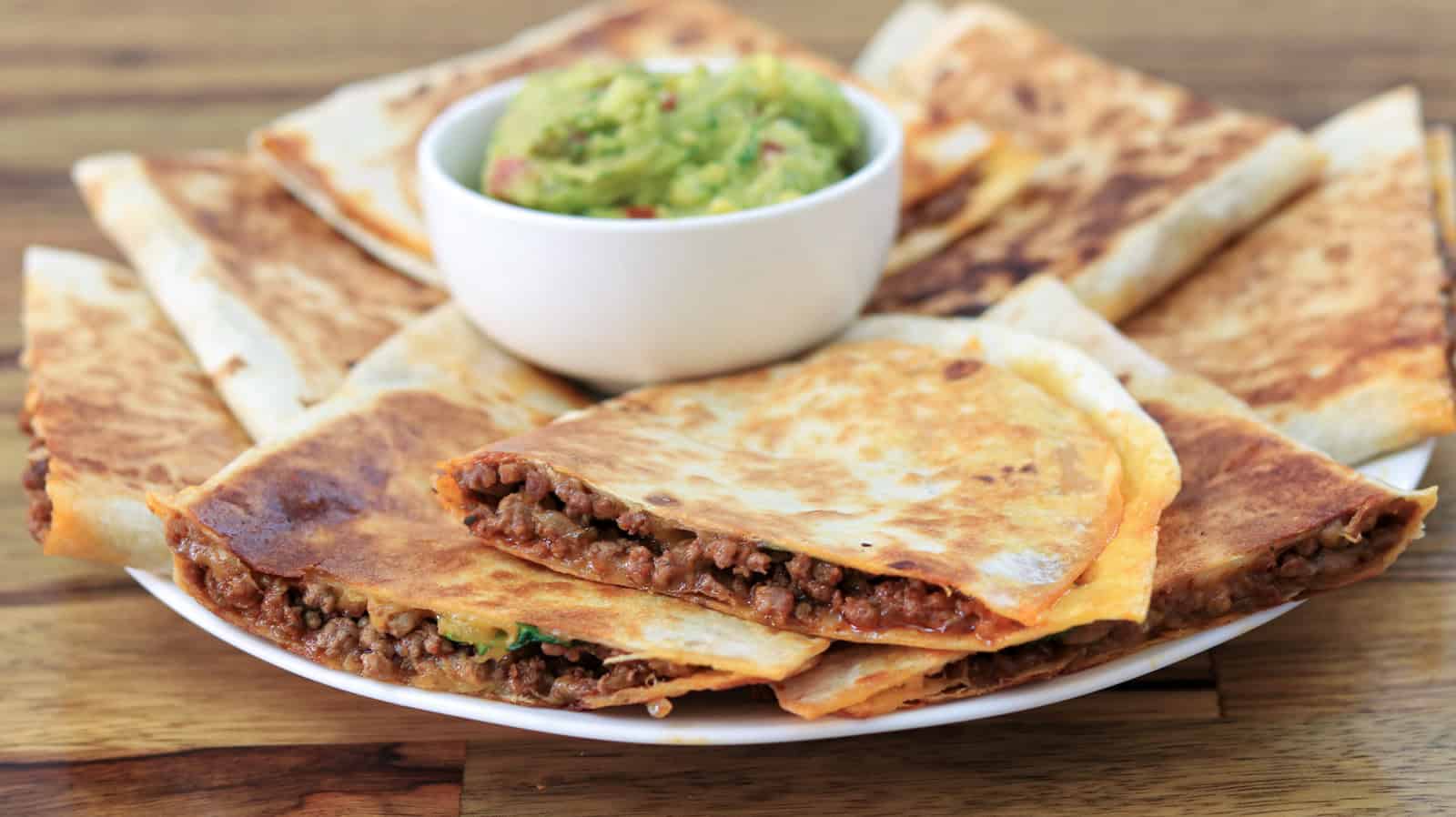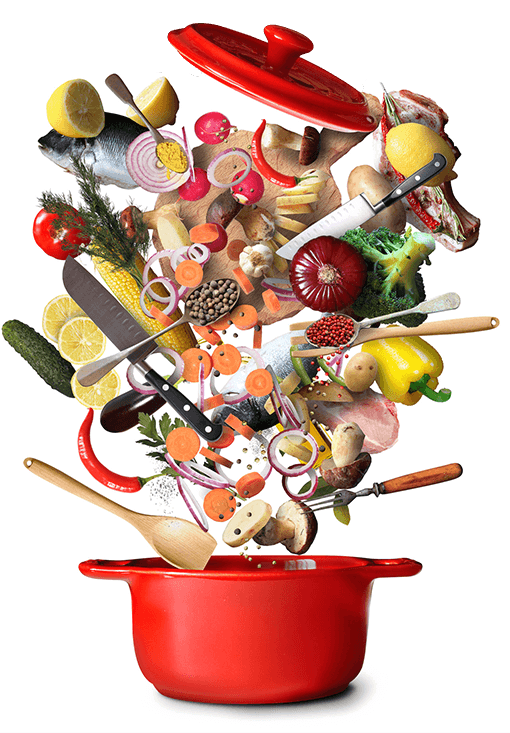Eggplant Bolognese Pasta Recipe
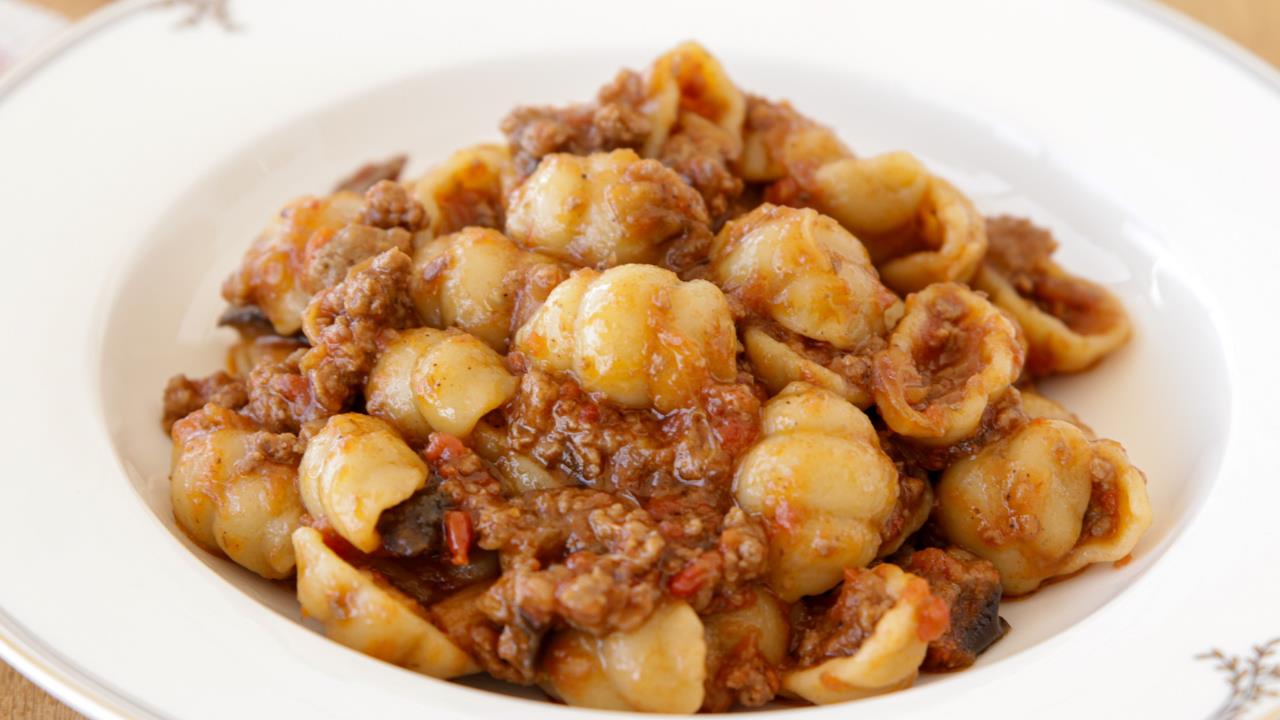
Pasta shells with tomato eggplant and meat sauce. This eggplant Bolognese is one of the best pasta recipes I’ve made recently. It’s rich, super flavorful and easy to make.
WHAT IS EGGPLANT BOLOGNESE?

It’s been a while since I made a pasta recipe, so I pondered, “What pasta dish can I create this time?” I came up with a few ideas, but after searching online, I realized they were too popular and the internet was saturated with them. Feeling frustrated, I opened the fridge and pantry to see what ingredients I had at home. I found an eggplant, tomato sauce, ground beef, and pasta. And that’s how this dish was born! Let me tell you, it turned out to be one of the best pasta recipes I’ve made in a long time.
My family loved it so much that they asked for more! If you’re looking for an easy and delicious pasta recipe, this tomato, eggplant, and meat sauce is perfect!
INGREDIENTS FOR EGGPLANT BOLOGNESE PASTA
- Olive Oil: Olive oil is essential for sautéing the vegetables and adding depth of flavor to the dish. It helps to soften the onions and eggplant, making them tender and delicious.
- Onion: Chopped onion provides a savory base for the sauce. When sautéed, it releases a sweet, aromatic flavor that enhances the overall taste of the Bolognese.
- Eggplant: The star ingredient, eggplant, adds a unique, rich texture to the sauce. Its slightly smoky flavor pairs perfectly with the ground beef and tomato sauce, making the dish hearty and satisfying.
- Garlic: Crushed garlic cloves bring a punch of flavor to the sauce. Garlic’s aromatic and savory qualities complement the other ingredients, adding depth and complexity.
- Ground Beef: Ground beef is the primary protein in this dish, providing a robust, meaty flavor. It makes the Bolognese sauce hearty and filling, perfect for a satisfying meal.
- Tomato Paste: Tomato paste intensifies the tomato flavor in the sauce and adds a rich, concentrated taste. It also helps to thicken the sauce, giving it a perfect consistency.
- Salt, Pepper, and Paprika: These spices season the sauce, enhancing the natural flavors of the ingredients. Salt brings out the flavors, pepper adds a hint of heat, and paprika contributes a subtle smokiness.
- Crushed Tomatoes/Tomato Sauce: Crushed tomatoes or tomato sauce form the base of the Bolognese, providing a rich, tangy flavor. They create a luscious, tomatoey backdrop for the other ingredients to shine.
- Water: Adding water ensures the sauce has the right consistency. It helps to blend all the ingredients together, making the sauce smooth and well-balanced.
- Pasta: The pasta of your choice serves as the perfect vehicle for the rich and flavorful Bolognese sauce. Cooked to al dente, it provides a satisfying bite and complements the hearty sauce beautifully.
Each ingredient in this Eggplant Bolognese Pasta plays a crucial role in creating a flavorful and well-balanced dish. From the savory base of onion and garlic to the hearty ground beef and rich tomato sauce, every component works together to make this pasta dish truly delicious.
IS THIS THE SAME AS EGGPLANT RAGÙ?
While both Eggplant Bolognese and Eggplant Ragu are pasta sauces that feature eggplant and a tomato base, they have some distinct differences:
Eggplant Bolognese
- Meat-Based: This sauce includes ground beef, making it a hearty, meaty sauce.
- Rich and Creamy: The Bolognese sauce is often richer and thicker, with the addition of tomato paste and sometimes cream or milk in traditional recipes.
- Traditional Origin: Bolognese is traditionally an Italian meat sauce, typically served with pasta.
Eggplant Ragù
- Vegetarian Option: Eggplant Ragu is typically a vegetarian dish, focusing more on the eggplant and sometimes other vegetables.
- Lighter Sauce: Ragu can be lighter and more vegetable-forward, without the addition of ground meat.
- Flexibility: While it can also include meat, traditional ragu variations often emphasize a mix of vegetables with or without meat.
In summary, the main difference lies in the inclusion of ground beef in Eggplant Bolognese, making it a richer, meatier sauce compared to the often lighter, vegetable-focused Eggplant Ragu. Both are delicious and hearty but cater to slightly different tastes and dietary preferences.
TIPS TO MAKE THE BEST EGGPLANT BOLOGNESE

Making the best Eggplant Bolognese involves a few key techniques and tips to enhance the flavors and textures of the dish. Here are some tips to help you achieve the best results:
Choose Fresh Ingredients
- Fresh Eggplant: Select firm, shiny eggplants without blemishes. Fresh eggplant has better texture and flavor.
- Quality Ground Beef: Use good-quality ground beef with a bit of fat content (around 80/20 ratio) for a richer, more flavorful sauce.
- Aromatic Garlic and Onions: Fresh garlic and onions contribute significantly to the depth of flavor.
Preparation Techniques
- Salt the Eggplant: Before cooking, sprinkle the eggplant cubes with salt and let them sit for 30 minutes. This draws out excess moisture and reduces bitterness. Rinse and pat them dry before cooking. This step is optional but can elevate your dish.
- Sauté Properly: Ensure the onions and eggplant are sautéed until golden and soft. This caramelization adds a sweet, rich flavor to the sauce.
- Layer the Flavors: Add garlic after the eggplant is golden to prevent it from burning and becoming bitter.
Cooking Tips
- Brown the Meat: Cook the ground beef over high heat until it’s nicely browned. This adds a deeper, more complex flavor to the sauce.
- Tomato Paste: Adding tomato paste and cooking it for a minute or two before adding the crushed tomatoes helps to develop a deeper tomato flavor.
- Simmer Slowly: Allow the sauce to simmer gently to let all the flavors meld together. This slow cooking process is key to a rich and flavorful Bolognese.
- Seasoning: Taste and adjust the seasoning throughout the cooking process. Add salt, pepper, and paprika to taste, and consider adding a pinch of sugar if the tomatoes are too acidic.
Enhance the Sauce
- Wine or Broth: For an extra layer of flavor, deglaze the pan with a splash of red wine or beef broth after browning the meat. This adds depth to the sauce.
- Fresh Herbs: Add a handful of fresh basil or parsley towards the end of cooking for a burst of fresh, vibrant flavor.
- Pasta Water: Save a cup of pasta cooking water to help bind the sauce to the pasta. The starchy water can help create a silky, cohesive sauce.
Serving Suggestions
- Al Dente Pasta: Cook the pasta to al dente according to package directions. This ensures the pasta has a pleasant bite and holds up well with the sauce.
- Combine and Cook: Toss the pasta with the sauce in the pan and cook together for a couple of minutes. This allows the pasta to absorb the flavors of the sauce.
- Cheese: Top the dish with freshly grated Parmesan or Pecorino Romano cheese for an extra touch of richness and flavor.
By following these tips, you can create a delicious and memorable Eggplant Bolognese that will impress your family and friends.
WHAT’S THE DIFFERENCE BETWEEN EGGPLANT BOLOGNESE AND CLASSIC BOLOGNESE PASTA?
While both Eggplant Bolognese and Classic Bolognese Pasta are delicious and hearty dishes, they have distinct differences in ingredients and preparation:
Eggplant Bolognese
- Vegetable Focus: This variation incorporates eggplant, which adds a unique texture and a slightly smoky flavor to the sauce. The eggplant not only enhances the nutritional value but also makes the dish lighter and more vegetable-forward.
- Additional Olive Oil: Due to the eggplant’s absorption properties, more olive oil is used to ensure the vegetables are properly sautéed and flavorful.
- Simpler Ingredients: The recipe focuses on basic ingredients like onions, garlic, ground beef, tomato paste, and crushed tomatoes, along with the eggplant.
Classic Bolognese
- Meat-Centric: Classic Bolognese is a rich, meat-based sauce typically made with a combination of ground beef, pork, and sometimes veal. It has a deep, savory flavor profile.
- Wine and Dairy: Traditional recipes often include red wine for deglazing and milk or cream to add richness and smoothness to the sauce.
- Long Simmering: Classic Bolognese is usually simmered for an extended period, allowing the flavors to develop and meld together for a more complex taste.
- Variety of Aromatics: It often includes a variety of aromatics like celery, carrots, and onions, adding depth and sweetness to the sauce.
If you’re interested in making a traditional Bolognese sauce, you can check out my Classic Pasta Bolognese Recipe.
Both versions offer a unique and delightful experience, whether you’re in the mood for a hearty, meat-forward dish or a lighter, vegetable-enhanced version.
HOW TO STORE EGGPLANT BOLOGNESE?
Storing Eggplant Bolognese properly ensures that it remains fresh and flavorful for later use. Here are some steps on how to store it:
Refrigeration
- Cool Completely: Allow the Eggplant Bolognese to cool completely at room temperature before storing. This helps prevent condensation and keeps the sauce from becoming watery.
- Use Airtight Containers: Transfer the cooled Bolognese into airtight containers. This prevents air from getting in and keeps the sauce fresh.
- Label and Date: Label the containers with the date so you can keep track of how long it has been stored.
- Refrigerate: Place the containers in the refrigerator. The Eggplant Bolognese can be stored in the fridge for up to 3-4 days.
Freezing
- Cool Completely: Just like with refrigeration, allow the Bolognese to cool completely before freezing.
- Use Freezer-Safe Containers: Transfer the cooled Bolognese into freezer-safe containers or heavy-duty freezer bags. If using bags, lay them flat in the freezer to save space.
- Leave Space: If using containers, leave a little space at the top to allow for expansion as the sauce freezes.
- Label and Date: Label the containers or bags with the date and contents.
- Freeze: Place the containers or bags in the freezer. The Eggplant Bolognese can be frozen for up to 2-3 months.
Reheating
- Thaw: If frozen, thaw the Bolognese in the refrigerator overnight.
- 2. Reheat on the Stove: Place the sauce in a saucepan and heat over medium-low heat, stirring occasionally, until warmed through.
- Reheat in the Microwave: Transfer the sauce to a microwave-safe dish and cover. Heat in the microwave on medium power, stirring occasionally, until hot.
Tips
Adjust Consistency: After reheating, if the sauce is too thick, you can add a splash of water or broth to achieve the desired consistency.
Freshen Up: Add a touch of fresh herbs or a drizzle of olive oil after reheating to refresh the flavors.
By following these storage tips, you can enjoy your Eggplant Bolognese later while maintaining its delicious taste and texture.
MORE PASTA RECIPES
Pasta is one of the most popular dishes in the world, with countless variations from pasta with tomato sauce to pesto pasta. Here are my top pasta dishes that my readers love:
- Creamy lemon pasta (Pasta al Limone)
- Rose Pasta Recipe (Pink Sauce Pasta)
- Chicken Pasta Bake
- Cacio e Pepe
- Lasagna
- One Pot Mac and Cheese
- Other pasta recipes
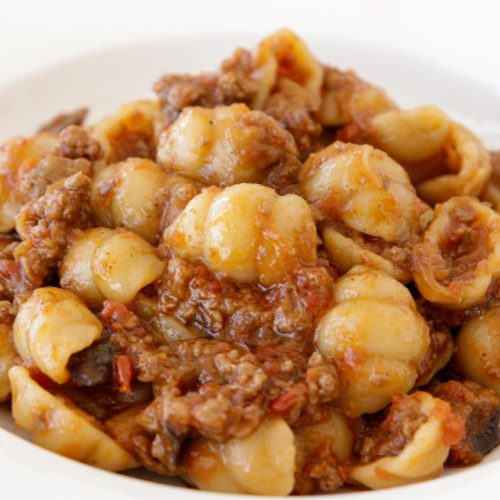
Eggplant Bolognese Pasta Recipe
Ingredients
- 4-5 tablespoons Olive oil
- 1 onion chopped
- 1 Eggplant cut into cubes
- 3 Garlic cloves crushed
- 600 g Ground beef
- 1 tablespoon Tomato paste
- Salt to taste
- Pepper to taste
- 1-2 teaspoons Paprika
- 1 can 400g Crushed tomatoes/tomato sauce
- Water
- 250 g Paste of your choice
Instructions
- DIRECTIONS
- In a large pan heat 2 tablespoons of olive oil, add chopped onion and sauté for 4-5 minutes. Add eggplant and cook over medium heat, stirring frequently until golden, about 12 minutes. Add olive oil as needed.
- When eggplant is golden add crushed garlic and cook for 1 minute. The move the eggplant mixture the side of the pan, making place for the meat.
- Add ground beef and cook over high heat, breaking it apart until no longer pink, about 5-6 minutes.
- Add spices, tomato paste and stir. Add crushed tomatoes/tomato sauce, fill the can with water and pour it to the pan. Give it a good stir, then bring to a boil over high heat. when boiling, reduce to low heat and cook for 15-20 minutes.
- Meanwhile make the pasta: fill a large pot with water, add 1 tablespoon of salt and bring to a boil. When boiling add the pasta and cook to al dente according to package directions. Reserve 1 cup of pasta cooking water for later.
- Drain the pasta add the meat sauce together with the 1 cup of pasta cooking water. Toss to combine. Cook for 1-2 minutes and serve.
Can I use a different type of pasta?
Yes, you can use any pasta shape you prefer. Spaghetti, fettuccine, penne, or rigatoni work well.Can I make this dish vegetarian?
Absolutely! Simply omit the ground beef or substitute it with plant-based ground meat or tofu for a vegetarian version.Can I freeze the leftovers?
Yes, you can freeze the Eggplant Bolognese. Store it in an airtight container for up to 3 months. Thaw overnight in the refrigerator before reheating.
Can I add other vegetables to the sauce?
Yes, feel free to add vegetables like bell peppers, zucchini, or mushrooms to enhance the flavor and nutritional value of the dish.Is this recipe spicy?
The recipe, as written, is not spicy. However, you can add red pepper flakes or a pinch of cayenne pepper if you prefer a spicy kick.Can I use fresh tomatoes instead of canned tomatoes?
Yes, you can use fresh tomatoes. Simply peel and chop them, or use canned tomatoes for convenience.Can I use dried herbs instead of fresh?
Yes, you can use dried herbs. Use about one-third the amount of dried herbs as you would fresh.How can I make this dish dairy-free?
To make this dish dairy-free, simply omit the cheese or use a dairy-free alternative.Can I make this dish ahead of time?
Yes, you can make the sauce ahead of time and store it in the refrigerator for up to 3 days. Cook the pasta fresh when ready to serve.What can I serve with Eggplant Bolognese Pasta?
This dish pairs well with a simple side salad, garlic bread, or a sprinkle of fresh herbs and grated Parmesan cheese.






